Understanding the Reflow Soldering Process in Ovens


Intro
Reflow soldering is an essential technique in the realm of electronics manufacturing, especially for surface-mount technology (SMT). This method ensures that solder paste melts and solidifies just right to create strong electrical connections between components and printed circuit boards (PCBs). Understanding this process is vital for engineers, technicians, and students who aim to grasp modern soldering practices.
From the intricate control of temperature profiles to the selection of the right soldering techniques and materials, reflow soldering is a blend of science and art. Each step in the procedure has a substantial impact—like a finely tuned orchestra needing its conductor. The challenges faced during this process can be likened to hidden landmines, waiting to spring up and cause defects if not managed carefully. Thus, delving into the nuances of reflow soldering is not just beneficial; it's necessary for producing reliable electronic devices.
Key Concepts
Definition of Primary Terms
To navigate the intricacies of reflow soldering, a clear understanding of fundamental concepts is crucial. Here are a few key terms:
- Reflow Soldering: A soldering process involving heating solder paste on a PCB to create a permanent connection between devices.
- Solder Paste: A mixture of powdered solder and flux, applied to the PCB before component placement.
- Temperature Profile: The specific heating and cooling paths that solder paste undergoes during the reflow process.
- Solder Joint: The physical connection formed when the molten solder solidifies around the component leads and PCB pads.
Related Concepts and Theories
Reflow soldering operates under several principles and theories worth noting:
- Thermal Dynamics: Understanding heat transfer helps in setting accurate temperature profiles essential for successful soldering.
- Material Science: Different materials will react differently under heat, influencing the choice of solder types and components used.
- Fluid Dynamics: The behavior of molten solder can affect how well it wets the surfaces, thereby determining the quality of the solder joint.
"In reflow soldering, achieving the right balance of heat and time is like walking a tightrope; too much or too little can spell disaster."
Challenges in Reflow Soldering
The reflow soldering process is fraught with challenges that can compromise quality. These may include:
- Cold Solder Joints: Occur when the solder does not melt completely or cools too quickly, leading to weak connections.
- Tombstoning: A common defect where one end of a component lifts off the surface, often caused by uneven heating.
- Dendritic Growth: Unwanted growth of metallic structures that can bridge gaps, leading to short circuits.
Each challenge presents unique problems that require careful strategizing to overcome.
Future Directions
As the electronics field continues to evolve, reflow soldering itself isn’t static. Areas for future research and improvement include:
Gaps Identified in Current Research
There are still many uncharted territories in soldering technology. For instance:
- Solder Alloy Developments: There’s an ever-growing interest in lead-free solder alloys that balance performance with safety and environmental impact.
- Innovations in Thermal Profiling: Advanced techniques for monitoring and adjusting temperature in real-time need exploration.
Suggestions for Further Studies
Future studies could focus on:
- Automation and Robotics: Investigating how automation can improve consistency and reduce human error.
- Impact of Different Fluxes: Researching how various flux compositions affect the soldering process and joint reliability.
In summary, the realm of reflow soldering is complex and multifaceted, with emerging challenges that demand thoughtful approaches and innovative solutions. Understanding these dynamics is of utmost importance for anyone looking to deepen their expertise in electronics manufacturing.
Foreword to Reflow Soldering
In the world of electronics manufacturing, reflow soldering stands as a cornerstone technique, pivotal for assembling components onto circuit boards. The process is not merely a pastime of hobbyists; it is the linchpin for the production of reliable, efficient electronic devices. This introduction sheds light on the nuanced layers of reflow soldering, focusing on the important elements, benefits, and considerations that envelop this technique.
Definition and Purpose
Reflow soldering can be defined as a soldering process that uses heat to melt solder paste, allowing it to fuse electronic components onto a printed circuit board. The primary purpose of reflow soldering lies in its efficiency; once the solder is melted, it encapsulates the electronic components firmly, ensuring their secure position and electrical connectivity. This methodology has evolved dramatically and continues to offer solutions meeting contemporary manufacturing demands.
It's crucial to note that in reflow soldering, both temperature control and timing are vital. One misstep in the process can lead to defective solder joints. Thus, understanding the mechanics behind reflow soldering is not just an academic pursuit, but a necessary requirement for excellence in modern electronics production.
Historical Development
The journey of reflow soldering traces back to the late 20th century when the advent of more compact and efficient electronic devices surged. Early forms primarily relied on manual soldering, often erratic and inconsistent. As technology advanced, so did the technique.
In the 1980s, the first automated reflow ovens emerged, utilizing convection techniques to control temperature more accurately. This shift marked a turning point, enabling manufacturers to produce higher volumes with greater reliability. Over the years, lead-free soldering also gained traction, particularly as regulations around lead usage tightened. This historical perspective highlights a continuous quest for improved precision and efficiency within the manufacturing realm.
Importance in Electronics
The significance of reflow soldering in electronics can't be overstated. Whether it's in consumer gadgets or sophisticated industrial machinery, the quality of solder joints directly impacts performance. A faulty solder joint could lead to malfunctions, resulting in costly repairs or product recalls.
There are several reasons reflow soldering stands vital:
- Consistency: Once the parameters are set, the process yields uniform results, ensuring each component is secured similarly.
- Scalability: As production ramps up, reflow soldering allows for the seamless transition from prototyping to full-scale manufacturing.
- Versatility: It accommodates various electronic components, from surface mount devices to more complex assemblies.
Reflow soldering is at the heart of modern electronics manufacturing, bridging the gap between efficiency and quality.
In summary, the introduction to reflow soldering reveals its essence not just as a mere technique, but as a critical process that empowers the electronic landscape. Understanding its foundations further complements the ongoing conversations about quality, efficiency, and technological advancements in the field.
Understanding the Reflow Process
The reflow process holds significant importance in the world of electronics, especially when discussing soldering techniques. Understanding how this process unfolds helps in appreciating the intricate balance of heat, material properties, and timing. It’s not just about heating components until they stick together; it’s about crafting a reliable electrical connection that can withstand both time and functionality. The process itself consists of several phases, each contributing in different ways to achieve optimal solder joint quality.
Phase Transition in Solder
Melting Phase
The melting phase involves raising the temperature of the solder in order for it to change from a solid to a liquid. This step is crucial for ensuring that the solder fully engulfs the metal surfaces it aims to join. A key characteristic of the melting phase is its precise temperature control; surpassing the recommended peak can lead to burning or damage to components.
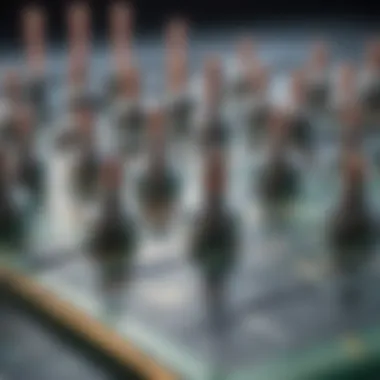
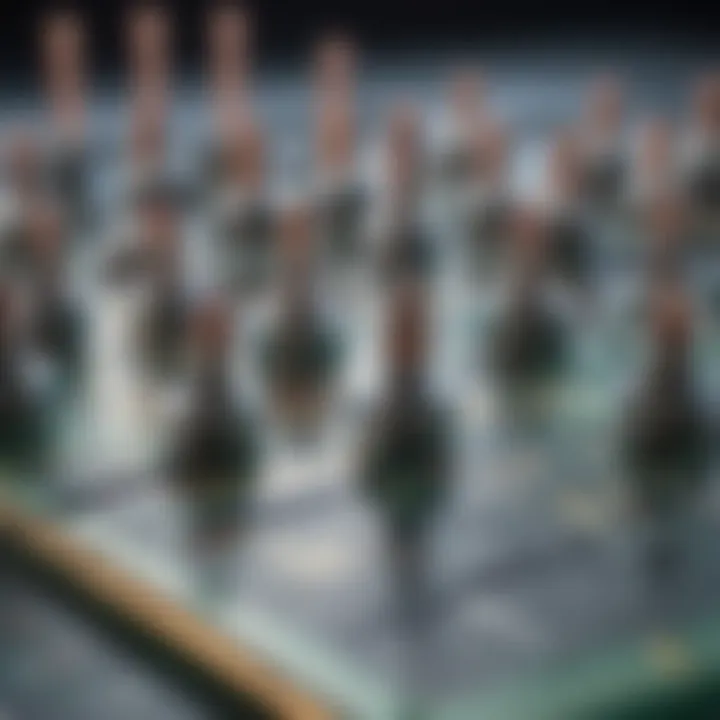
A popular choice during this phase is the use of tin-lead solder, which has a melting temperature that’s relatively easy to manage. However, just as with everything, there are advantages and disadvantages. While the lower melting point makes it easier to work with, lead's toxicity has caused many industries to shift towards lead-free options.
Soaking Phase
Next comes the soaking phase. Here, the temperature holds steady at a targeted level for a specific time period. This allows the solder to uniformly heat the components and the board, promoting consistent melting. The key characteristic of this phase is its ability to minimize thermal shock, which can damage sensitive electronics.
It’s a strategic choice, as it enhances the wetting ability of the solder. Nevertheless, if not timed correctly, it could lead to oxidation or even excessive heating, which in turn jeopardizes the connection. The balance here is essential; too short and you risk failing connections, too long and you jeopardize the components themselves.
Cooling Phase
Finally, we have the cooling phase, which plays a vital role in solder joint strength. It involves lowering the temperature after the components have been joined through solder. A key characteristic of this phase is the rate of cooling; this requires careful attention, for rapid cooling may induce stress in the joint.
The unique feature of the cooling phase is how it influences the final microstructure of the joint. A slow cool-down typically leads to stronger joints with fewer defects, while overheating during this phase can lead to a brittle connection. Thus, every step, from the melting to cooling, has its own significance that builds toward achieving a sound solder joint.
Equipment Used in Reflow Soldering
Understanding the various equipment used during reflow soldering adds another layer to mastering the process. The machinery isn't there just for decoration; each piece plays a crucial role in effectively controlling the environment in which soldering happens. Here are a few essential components to consider.
Types of Reflow Ovens
The types of reflow ovens determine the effectiveness and efficiency of the soldering process. Generally, there are two major categories: convection and vapor reflow ovens. The convection ovens use hot air to transfer heat, which is favorable for a range of components. Their ability to reach precise temperatures makes them highly regarded in the industry.
On the flip side, vapor phase ovens utilize a liquid that vaporizes, allowing for consistent temperature control around all components. While vapor phase systems offer unique benefits, including less thermal shock, they can be a bit pricier and bulky. Thus, it boils down to matching the right oven type with specific project needs.
Conveyor Systems
Conveyor systems are the backbone of large-scale reflow soldering operations. They aid in the efficient flow of boards through the heating zones, fully automating the transport process. A unique feature of conveyor systems is the adjustable speed, which can influence the residence time in each zone of the reflow oven.
This adaptability allows manufacturers to align the process with the specific requirements of the products being soldered. However, specific initial setup may require additional fine-tuning to avoid any bottlenecks during operation.
Control Systems
Control systems encompass the software and hardware infrastructure that allow for monitoring and managing the reflow process. They provide real-time data on temperature and time within the oven, which is critical for maintaining optimal conditions.
Using advanced algorithms, these systems can predict and adapt to various operational factors, from environmental fluctuations to component tolerances. While vital for achieving precision across the board, they often come with a steep learning curve and require skilled personnel to operate efficiently.
Oven Dynamics and Temperature Profiles
Understanding the dynamics of oven temperature profiles is crucial in the reflow soldering process. Each phase whether preheating, reflow, or cooling has specific requirements that influence the thermal behavior of solder joints, directly impacting the reliability and quality of the final product. A well-defined temperature profile helps balance efficiency and effectiveness, ensuring that components are soldered properly without risking damage or defects.
Understanding Temperature Profiles
Preheat Zone
The preheat zone plays a pivotal role in minimizing thermal shock to the components and substrates. This zone gradually warms the assembly before it enters the more intense reflow zone. The key characteristic of this zone is its ability to prepare solder and components for thermal expansion. This warming facilitates a smooth transition along the temperature curve, which is essential for maintaining solder integrity.
One unique feature of the preheat zone is its ability to evaporate volatile substances and activate the flux in the solder paste. While it might seem like a minor phase, it actually mitigates the risk of defects later in the process. A well-set preheat profile can lead to an overall increase in the quality of solder joints, demonstrating its importance in this article.
Reflow Zone
Moving into the reflow zone, this area is where things really heat up. The temperature is elevated to the melting point of the solder, allowing it to flow and create the necessary connections between the components and the PCB (printed circuit board). This zone is critical as it enables the molten solder to wet the surfaces effectively.
The key characteristic of this zone is the precise control of temperature, which can significantly influence the properties of the solder joint. The unique feature of this zone is the need for a carefully timed duration at elevated temperatures; too long can cause degradation while too short may lead to insufficient soldering. Thus, achieving the right balance here is essential for optimal performance.
Cool Zone
Finally, we arrive at the cool zone. This phase is just as important as the prior ones, yet often overlooked. Here, the solder solidifies, and controlling the cooling rate is crucial. A rapid drop in temperature may lead to stress fractures or voiding, while a slow cooling can promote better crystal growth in solder, enhancing its strength.
The key characteristic of the cool zone is its impact on the mechanical properties of solder joints. What makes this zone particularly beneficial is its potential to define the final characteristics of the solder joint before it moves on to quality checks. The unique feature lies in its ability to favorably set up mechanical strength depending on how cooling is managed throughout this zone, further demonstrating its relevance to the topic.
Factors Influencing Temperature Profiles
Temperature profiles aren't just a matter of choices within the oven dynamics; various external factors significantly influence their performance throughout the reflow soldering process.
Component Size
Component size plays a critical role in the warmth and distribution of heat during reflow soldering. Larger components inherently absorb more heat, affecting the temperature profile necessary for soldering. Key characteristics include how effectively heat can be disseminated while ensuring smaller components don't overheat.
A unique feature regarding component size has to do with how it necessitates adjustments to the heating parameters in the oven, leading to potential challenges. If not sized and accounted for properly, the risk of significant defects rises, making component size a vital consideration in this entire process.
Board Material
The material of the printed circuit board plays a determining factor too. Different materials, such as FR-4 or polyimide, have distinct thermal properties which impact how heat is absorbed and retained. The key characteristic here is that different materials require tailored temperature profiles to ensure optimal solder joint formation.
A noteworthy feature of board material's influence is its effect on how quickly or slowly the different layers heat up, therefore changing the energy distribution. Misalignment can lead to heat concentration in one area, resulting in poor solder joints or thermal damage to the substances adjoining them.
Solder Paste Type
The type of solder paste also dramatically affects the temperature profile. Various pastes have different melting points and reflow behaviors depending on their composition and metal content. Key characteristic includes adaptability, as specific solder pastes need configured profiles for successful joint formation.
The unique feature of solder paste is that variations in type can lead to substantial shifts in the optimal temperatures at which solder is applied. Those adjustments can also influence the final quality of solder joints, either enhancing or diminishing their integrity based on how closely the process aligns with established profiles.
"Understanding these factors is key to achieving effective and reliable solder joint performance."
Types of Solder Alloys
When discussing the reflow soldering process, the topic of solder alloys comes to the forefront. Different types of alloys play a crucial role in determining the quality and reliability of solder joints. Alloys affect melting points, flow characteristics, and strength, making their selection essential based on the specific application needs.
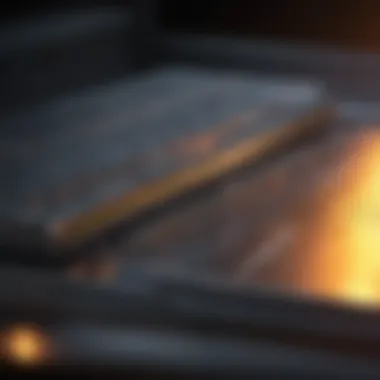

Lead-Based Solder
Lead-based solder has long been the go-to choice in the electronics industry. Its primary component, tin-lead alloy, typically consists of 60% tin and 40% lead, although variations exist based on application requirements.
One of the key characteristics of lead-based solder is its relatively low melting point. This allows for good wetting on various metal surfaces, ensuring strong joints. The flow of the molten solder is quite favorable, which contributes to a robust connection between components and printed circuit boards. However, the use of lead-based solder has come under fire due to health and environmental concerns. Regulatory bodies like the European Union have set stringent guidelines restricting the use of lead, prompting manufacturers to seek alternatives.
Lead-Free Solder
Composition
Lead-free solder is typically composed of tin combined with other metal additives such as silver, copper, or bismuth. This combination contributes to a higher melting point compared to lead-based varieties, meaning that careful heat management is essential during the soldering process. The unique combination of metals in lead-free solder also results in variations in mechanical and thermal characteristics, providing options tailored to specific applications.
A notable advantage of lead-free solder is its compliance with health regulations. Its composition avoids the harmful effects associated with lead exposure, thus increasing safety for both workers and consumers. Lead-free solder also offers improved thermal fatigue resistance, beneficial in applications subjected to heat cycles, such as in automotive or aerospace industries.
Advantages and Disadvantages
While lead-free solder presents various benefits, it comes with its fair share of challenges. For starters, the higher melting point requires reflow ovens to operate at elevated temperatures. This can lead to thermal stress on sensitive electronic components, which may prove detrimental in some instances.
On the flip side, lead-free solder provides environmental benefits, having pushed the industry towards more sustainable practices. Many manufacturers now lean toward lead-free options as they adapt to changing regulations and consumer preferences. Furthermore, some studies suggest that lead-free solders may offer improved long-term reliability in specific use cases.
However, lead-free solder often involves complex alloying processes, which can complicate production methods and increase costs. Manufacturers must weigh the pros and cons carefully to find the right balance for their specific applications. Ultimately, the choice between lead-based and lead-free solder depends on regulatory requirements, environmental considerations, and the specific needs of the electronic devices being produced.
Influence of Solder Paste on Process Efficiency
Solder paste plays a pivotal role in the reflow soldering process, acting not just as a medium for attachment but also influencing the overall efficiency and reliability of solder joints. The effectiveness of solder paste can impact the quality of the final product significantly. Thus, understanding its composition and application techniques becomes essential for achieving optimal results in soldering practices.
Composition of Solder Paste
Flux Types
Flux is an integral component of solder paste. It helps in cleaning the surface of the metal, allowing for better adhesion of solder. Different flux types serve various purposes, including rosin-based, no-clean, and water-soluble fluxes. For instance, rosin-based flux is popular, especially in electronic applications, due to its strong cleaning capabilities while leaving little residue.
Key Characteristics: Rosin-based flux not only efficiently removes oxides but also protects solder from oxidation until it solidifies. This characteristic makes it essential in ensuring reliable connections between components.
Advantages and Disadvantages: The main advantage of using rosin flux is its efficacy in various conditions, making it a favorite among manufacturers. However, it requires proper cleaning after soldering, which can be a drawback in terms of time and labor.
Metal Content
The metal content of solder paste, which typically consists of tin and lead or lead-free alloys, directly influences solder joint strength and melting characteristics. Selecting the right metal content is crucial for meeting specific manufacturing requirements.
Key Characteristics: A higher percentage of metal content usually translates to a stronger joint, but it can also affect the melting behavior of the solder during reflow.
Advantages and Disadvantages: For example, lead-based solders offer excellent wetting properties, although they raise health concerns. On the flip side, lead-free alternatives like SAC alloys (tin, silver, and copper) are gaining popularity, being more environmentally friendly. Yet, they often require more precise temperature control during soldering due to their different thermal profiles.
Application Techniques
Screen Printing
Screen printing is one of the most common techniques for applying solder paste to PCBs. This method involves using a mesh screen to transfer the paste accurately to the desired areas of the board. Its high speed and repeatability make it a go-to choice in mass production.
Key Characteristics: The method ensures consistent paste deposits, crucial for producing reliable solder joints. With the right setup, it can accommodate various pad designs without any hiccups.
Advantages and Disadvantages: While screen printing is fast and efficient, it requires precise calibration of squeegees and screens. Failure to do so can lead to paste misalignment or uneven deposits, potentially compromising joint quality and increasing defects.
Stencil Printing
Stencil printing is another widely used method, where a thin metal stencil is employed to apply solder paste. Like screen printing, it aims to ensure a uniform layer of paste but does so through a different mechanism.
Key Characteristics: The ability to customize stencil designs allows for greater flexibility in handling intricate PCB layouts, which can be a game changer in certain applications.
Advantages and Disadvantages: Stencil printing can result in cleaner deposits and reduced wastage of solder paste compared to screen printing. However, it also has its caveats, such as longer setup times and the requirement for careful handling to avoid smudges on the pads.
Challenges in Reflow Soldering
Reflow soldering, while a staple in electronics manufacturing, is not without its pitfalls. Understanding the challenges associated with it is crucial for achieving reliable solder joints. These challenges can directly affect the quality of electronic assemblies and have cascading effects on performance and longevity.
The process can be subject to a myriad of defects, which may arise from various factors including equipment settings, material choices, and operator error. Addressing these challenges not only ensures a smoother manufacturing process but also enhances product reliability and reduces costs associated with rework and failures.
Common Defects
Cold Solder Joints
Cold solder joints are a common defect that occurs when the solder fails to melt adequately, leading to poor bonding between the solder and the component or pad. One of the key characteristics of cold solder joints is their appearance; they often look dull and rough, which is distinct from the shiny finish of a properly soldered joint.
This specific defect can be a significant nuisance as it compromises the electrical connection, potentially leading to intermittent failures in the field. Cold solder joints primarily stem from insufficient heat, which can occur during the reflow phase. Therefore, ensuring that the oven reaches the correct temperature and that components are adequately preheated can mitigate this issue. Ultimately, while cold solder joints are not a preferred outcome, addressing their occurrence can lead to learning and refinement in soldering procedures—allowing for better overall practices.
Solder Ball Formation
Solder ball formation refers to small balls of solder that can become dislodged during the reflow process. These tiny spheres can lead to shorts in circuit boards and affect their functionality. A notable characteristic of solder balls is that they are often indicative of poor solder paste application.
Their existence poses a challenge as they can be elusive to detect until after assembly. Solder ball formation can result from too much solder paste, inappropriate stencil designs, or improper temperature profiles during reflow. Recognizing the signs and adjusting the process can significantly help reduce solder ball formation in soldering operations. Watching for this issue ensures a more meticulous approach, thus improving the overall reliability of electronic devices.
Insufficient Wetting
Insufficient wetting occurs when the solder fails to adequately spread and adhere to the surfaces of the component and PCB pad. A pivotal aspect of this issue is that it can manifest as areas where solder appears to bead up instead of form a smooth surface. This directly hampers the electrical connection quality.
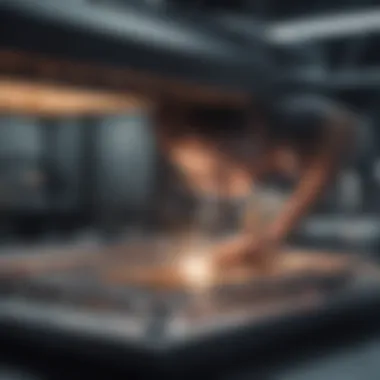
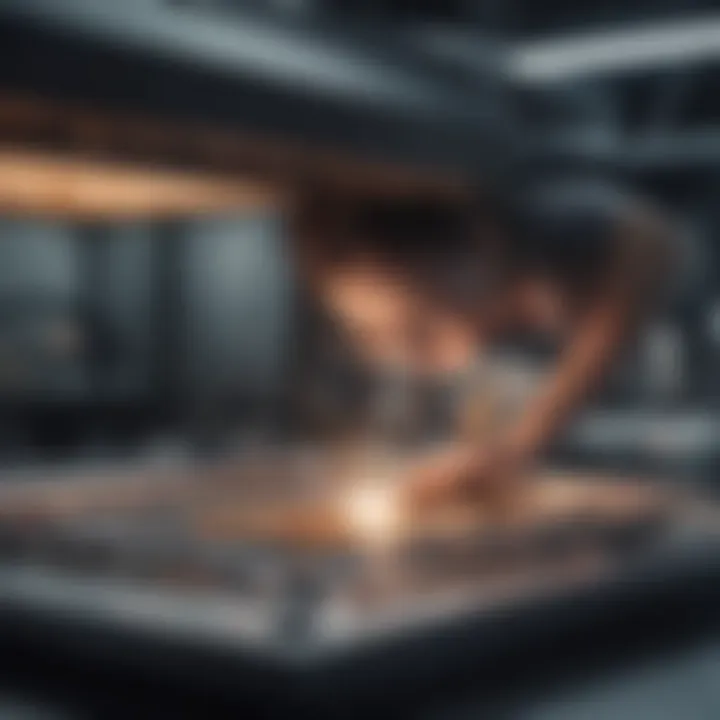
The reasons behind insufficient wetting can vary; factors like the choice of solder paste, board surface finish, and even contamination can play a role. The unique aspect here is the need for proper flux activation during the reflow phase: without it, you can expect to see solder behaving in unexpected ways. Tackling this defect often means reviewing the solder paste’s composition and ensuring the correct application techniques. Overcoming the challenge of insufficient wetting not only enhances the mechanical bond but also contributes preventively against potential failure modes in products.
Troubleshooting Techniques
Proper troubleshooting techniques are vital for anyone involved in reflow soldering. When defects arise, systematized methods can provide clarity in understanding the root cause.
Analyzing Temperature Data
Analyzing temperature data during the reflow process serves to pinpoint specific areas for improvement. By examining how temperature fluctuates through different stages of cooking, engineers can tailor their procedures accordingly. A crucial characteristic of this technique is the ability to utilize thermal profiles to diagnose common issues like cold solder joints or insufficient wetting.
This method is beneficial as it provides empirical evidence that allows for informed decisions, preventing guesswork. However, it requires meticulous record-keeping and the right tools to capture the data accurately. Such analytics bring to light underlying patterns, thus paving the way for informed adjustments.
Solder Paste Inspection
Solder paste inspection is another pillar in tackling defects. This practice involves examining the solder paste application before the reflow body goes into the oven. A key characteristic of solder paste inspection is the focus on both its placement and volume on the PCB. If the paste is applied too thick or unevenly, it can lead to various challenges down the line.
This approach is advantageous in that it allows for detecting issues before they may propagate into the reflow oven. Effective inspection practices can help in catching problems early, thus reducing the likelihood of defects impacting assembly quality. Ensuring solder paste application is precisely calibrated permits smoother operations and a better end product.
Optimizing Reflow Soldering Techniques
Optimizing reflow soldering techniques is vital for achieving high-quality solder joints, which ultimately impacts the performance and reliability of electronic devices. The importance of this optimization can’t be overstated; it ensures a consistent soldering process, minimizes defects, and enhances component lifespan. Effective reflow soldering requires a blend of several design parameters and process controls that contribute directly to the success of the soldering operation.
Design Considerations
Design plays a crucial role in the reflow soldering process. Two specific areas that require attention are pad design and trace width.
Pad Design
Pad design focuses on the layout characteristics of solder pads on printed circuit boards (PCBs). A well-designed pad is critical as it provides the necessary surface area for solder adhesion. A key characteristic of pad design is its shape; for example, a rounded pad can allow better solder flow compared to a square one. This trait makes rounded pads a popular choice in designs aimed at improving wickability.
The unique feature of pad design is its ability to affect the thermal distribution across the PCB. Adequate thermal relief allows heat to dissipate properly during reflow, which is essential for ensuring that solder achieves the necessary melting temperatures throughout the joint. Since poorly designed pads can lead to insufficient wetting, this aspect is not just about aesthetics; it’s foundational for achieving robust solder joints and minimizing defects like cold solder joints.
Trace Width
Trace width relates to the width of the copper traces connecting components on the PCB. It's crucial to ensure that traces can handle the electrical current without overheating. A primary characteristic of trace width is its direct impact on impedance and inductance in circuit designs. Choosing the right width can help minimize signal integrity issues—this is especially important in high-speed applications.
A unique aspect of trace width optimization is its effect on the thermal performance of a PCB. Wider traces can dissipate heat more effectively, contributing to overall board reliability. However, one must also consider the trade-off between trace width and PCB space; excessively wide traces may consume valuable real estate on compact designs.
Implementing Process Controls
Process control is another critical aspect of optimizing reflow soldering. Effective controls include monitoring temperature profiles, ensuring that the correct amounts of solder paste are applied, and assessing the entire reflow profile. These controls ensure that the process stays within defined parameters, allowing manufacturers to identify inconsistencies quickly.
To summarize, optimizing reflow soldering techniques through detailed attention to design considerations like pad design and trace width, as well as thorough implementation of process controls, significantly enhances the overall quality of solder joints. This, in turn, contributes to the reliability and longevity of electronic devices, marking it as a fundamental component in modern electronics manufacturing.
Industry Standards and Best Practices
In the realm of reflow soldering, industry standards and best practices play a pivotal role in ensuring quality and consistency in solder joint formation. These guidelines are not merely bureaucratic junctures they serve as essential benchmarks that guide practitioners in achieving optimal results. Adhering to these standards mitigates defects, enhances reliability, and instills confidence in the manufactured products. The focus on uniformity in procedures and materials is crucial in an industry where precision directly correlates with performance.
IPC Guidelines
The IPC (Institute of Printed Circuits) has established several guidelines crucial for reflow soldering. These standards provide a framework to ensure that every aspect of the soldering process is systematically addressed, from material selection to process execution. One of the pivotal documents is IPC-A-610, which set the criteria for soldered electrical and electronic assemblies. By adhering to IPC guidelines, manufacturers can ensure that boards meet rigorous quality requirements.
Benefits of following IPC guidelines include:
- Quality Assurance: They provide a well-defined quality benchmark that should be met to ensure the performance and longevity of solder joints.
- Consistency: These standards promote uniformity in manufacturing practices, ensuring that every batch upholds the same quality.
- Market Access: Compliance with IPC guidelines often becomes a prerequisite for entering certain markets, particularly in highly regulated sectors.
For example, IPC-7711/21 outlines the procedures for reworking and repairing solder joints. This standard becomes invaluable when a defect arises, providing clear steps to rectify issues without sacrificing the integrity of the board.
"Quality in electronics manufacturing is not just about meeting standards; it’s about exceeding them to elevate the product’s reliability."
Quality Control Protocols
Quality control protocols act as a vigilant watchdog throughout the reflow soldering process. Effective protocols incorporate both in-line and post-production inspections. The deployment of these measures ensures that any potential defects are identified and addressed before products reach the consumer.
Several essential aspects are integral to quality control in reflow soldering:
- Regular Equipment Calibration: Ensuring that ovens and associated machinery operate at optimal settings is crucial for maintaining consistent heating profiles.
- Solder Paste Analysis: It’s essential to evaluate solder paste batches for consistency in composition and performance before application, as inconsistencies can lead to defects.
- Thermal Profiling: Continuous monitoring and adjustments of the thermal profile during production to align with IPC recommendations is vital for effective soldering.
The monitoring phase of production could include both thermal IR cameras and data loggers to collect critical temperature data, leading to comprehensive analysis and necessary adjustments.
Future Trends in Reflow Soldering
As we look towards the future, it's essential to understand how advancements in technology and shifts in industry practices are shaping the landscape of reflow soldering. This section outlines key trends that inform not only operational choices in electronics manufacturing but also the broader implications for sustainability and efficiency. Recognizing these trends is critical for anyone involved in the production of electronic components, as they promise to elevate quality and effectiveness in soldering processes.
Advancements in Technology
The realm of reflow soldering is experiencing a renaissance, driven by innovations that enhance not only the efficacy but also the safety of soldering processes. New technologies have emerged, significantly impacting speed and precision in soldering applications. For instance, the use of advanced algorithms in control systems allows for granular adjustments to temperature profiles throughout the reflow process.
Moreover, machine learning is playing a pivotal role in predictive maintenance. By analyzing historical data from soldering processes, manufacturers can foresee potential failures or irregularities in equipment performance. This predictive capability is a game changer; it shifts the focus from reactively addressing failures to proactively preventing them. The result is enhanced uptime and reduced waste, translating to significant cost savings.
Another trend is the integration of smart sensors within reflow ovens. These sensors can monitor environmental variables, such as humidity and air quality, in real-time, ensuring optimal conditions for soldering. This level of vigilance allows manufacturers to adapt processes on-the-fly, reducing the instance of defects while maintaining high throughput. In this technological landscape, companies are not just keeping up but rather setting the pace for future developments.
Sustainability in Soldering Practices
Sustainability is another pressing concern reshaping the reflow soldering industry. As environmental regulations tighten and consumer awareness grows, manufacturers are increasingly compelled to pursue greener practices. One avenue gaining momentum is the shift towards eco-friendly solder materials. Lead-free solders have become the standard, but ongoing research into alternative materials continues to gain traction.
Implementing recycling methods for solder waste is another principle gaining ground. Companies are now looking at ways to reclaim solder and materials from defective boards or used solder paste. This not only diminishes waste but also contributes to a circular economy within the electronics sector.
Furthermore, energy-efficient reflow ovens are on the rise. With a focus on reducing carbon footprints, manufacturers are investing in technology that minimizes energy consumption during the reflow process. Upgrading to ovens that utilize infrared heating instead of convection, for example, can drastically lower energy requirements while maintaining the quality of solder joints.
"As the future unfolds, the push for sustainability will redefine standards, and adaptation to these practices will be crucial for success."
Embracing these advancements in technology and sustainability not only leads to improved soldering quality but also aligns with broader industry objectives to innovate responsibly. By staying ahead of these trends, educators, researchers, and professionals can facilitate a shift towards a more sustainable, efficient reflow soldering process.



